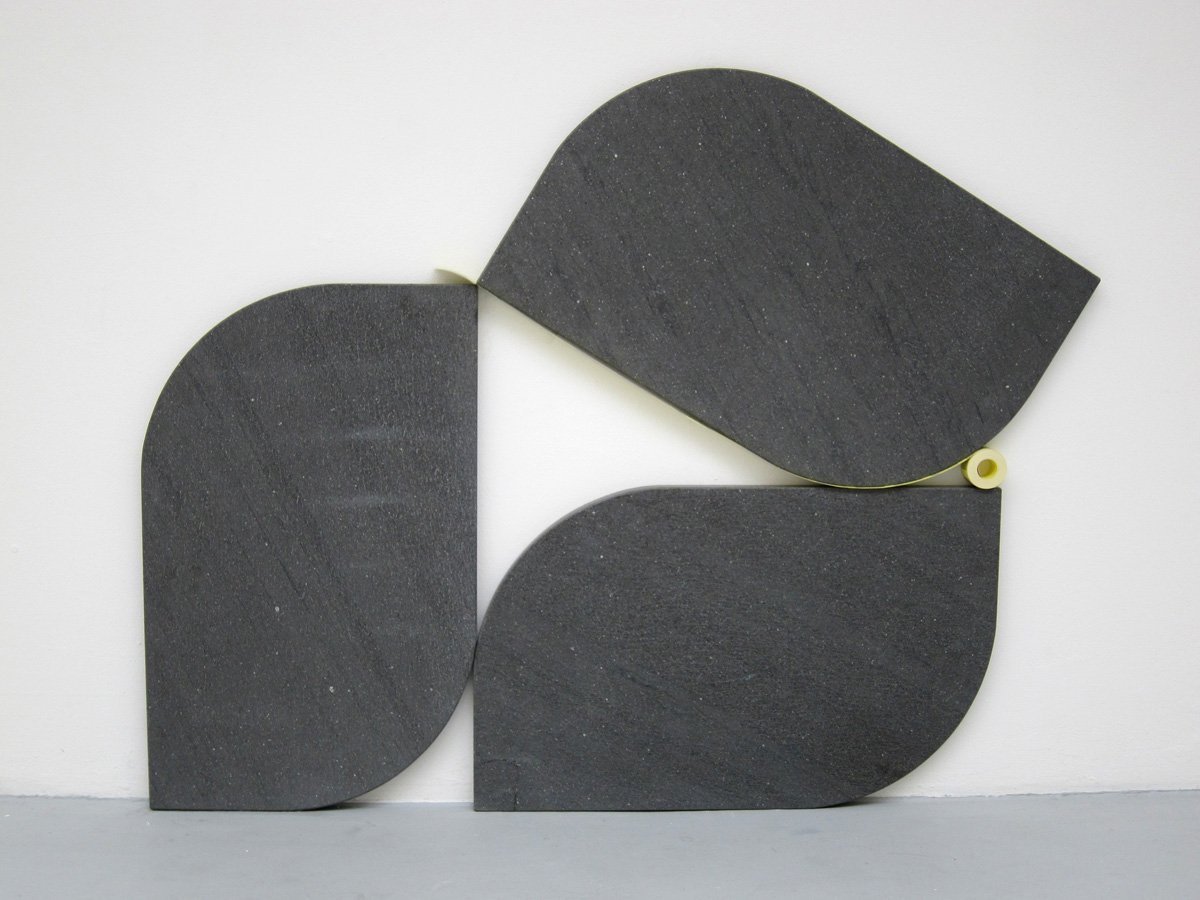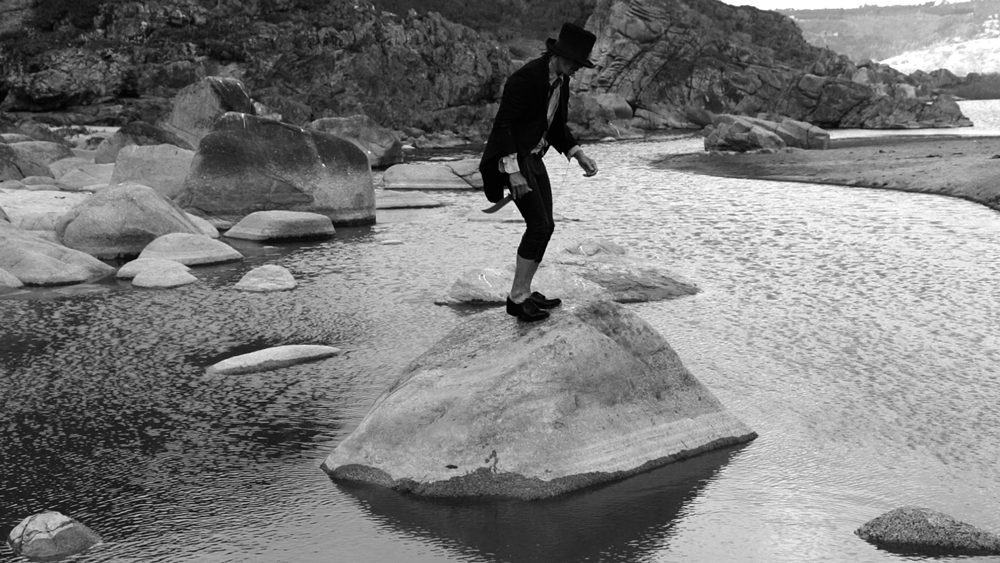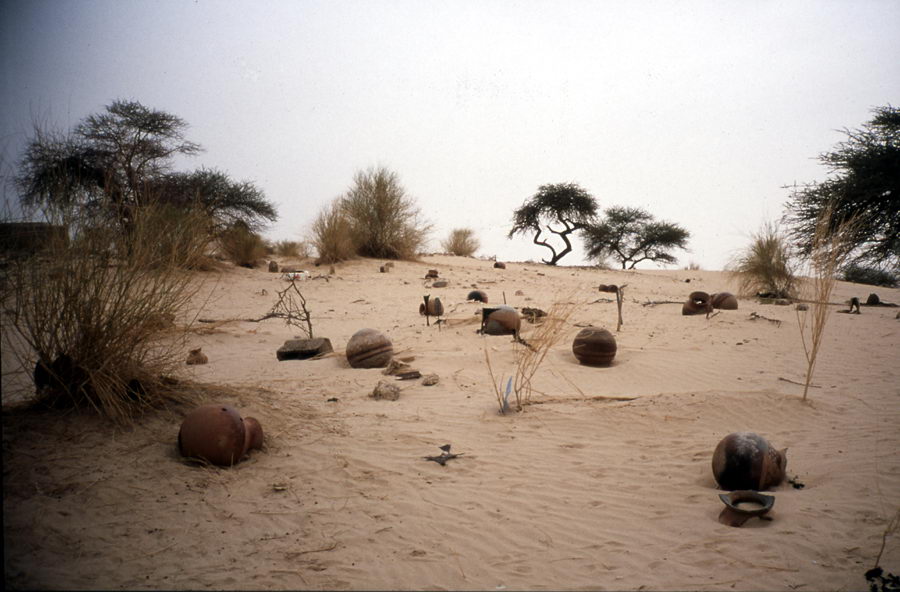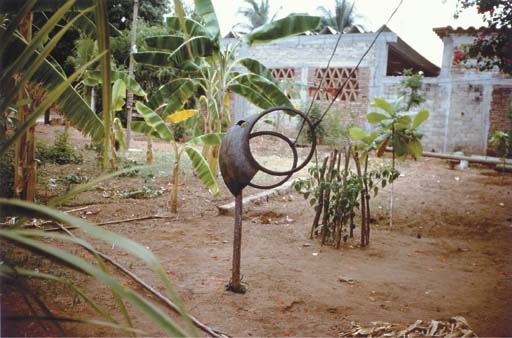
© » KADIST
Mariana Castillo Deball
Do ut des (2009) is part of an ongoing series of books that Castillo Deball has altered with perforations, starting from the front page and working inward, forming symmetrical patterns when each spread is opened. The books belong to O Mundo dos Museus (The World of Museums), a collection conceived by the Brazilian designer Eugênio Hirsch in the 1970s. More than simply a catalogue of artworks, each offers the reader a promenade through a different world museum and its functioning, starting with photo reportage of the building, its urban landscape and architecture, the management and restoration of works, and visitors walking though the galleries.

© » KADIST
Erick Beltran
Drawing & Print (Drawing & Print)
In his posters, prints, and installations, Erick Beltrán employs the language and tools of graphic design, linguistics, typography, and variations in alphabetical forms across cultures; he is specifically interested in how language and meaning form structures that can be misconstrued as universal. In The Individual Is a Mirage (2010), Beltrán offers up a graphic chart mapping the myth of individual identity.

© » KADIST
Minerva Cuevas
Drawing & Print (Drawing & Print)
During her research on primitive currencies and cultural cannibalism, Cuevas came across the Donald Duck comic book issue “The Stone Money Mystery,” where Donald goes on a quest to find missing museum objects. Cuevas’s America (2006) is a wall painting of a comic Donald Duck wallowing in a heap of gold coins, alluding to Mexico’s postrevolutionary mural tradition. The mural’s background is one of the earliest illustrations of flora and fauna in the American continent, juxtaposed with a reference to America as having bountiful natural resources available to be exploited, and the historical use of comics as ideological tools.

© » KADIST
Pablo Rasgado
Pablo Rasgado’s paintings and installations serve as a visual record of contemporary urban human behavior. Rasgado wanders through the urban landscape in Mexico City and other major cities, looking for moments of intrigue in the dirt and debris. He captures these details by extracting materials from the sites and deploying them in the gallery.

© » KADIST
Mario Garcia Torres
Mario Garcia Torres imagines cinematic devices to replay stories occasionally forgotten by Conceptual art. For him, this is a way of rethinking the tradition in a more personal way, to have a grip on events of recent history and examine them with a curiosity, both critical and sensual. The artist emphasizes the fact that new ideas and meanings may arise from these archaeological narratives.

© » KADIST
Mario Garcia Torres
Mario Garcia Torres films a game of Charades among professional actors guessing the former North Korean dictator’s favorite Hollywood films. Indeed rather surprisingly Kim seems to have had a huge collection of Western videos and he published a book called “On the art of the Cinema” in 1973. As the final acknowledgments indicate, Garcia Torres’s work was produced following in depth research, consulting information given by director Shin Sang-ok who has been kidnapped by Kim in 1978, as well as Jerrold Post (The George Washington University) and Timothy Savage (Nautilus Institute for Security and Sustainable Development).

© » KADIST
Mario Garcia Torres
Mario Garcia Torres discovered the work of artist Oscar Neuestern in an article published in ARTnews in 1969. This article, which is the only trace of his work, is indicative of a lack of interest by Neuestern to leave his name in history; to “defend an artistic activity that has little or no interest to last.” Oscar Neuestern could only remember the previous 24 hours, of which his life and his work are in constant erasure and reconstruction. His practice was “to let things be done with time and the unconscious,” while “not fearing the void.” He looked for the absolute through transparency and symmetry.

© » KADIST
Mariana Castillo Deball
Taking archaeology as her departure point to examine the trajectories of replicated and displaced objects, “Who will measure the space, who will tell me the time?” was produced in Oaxaca for her exhibition of the same title at the Contemporary Museum of Oaxaca (MACO) in 2015. The sculpture, employing the technique of traditional Atzompa pottery originating from Oaxaca, Mexico, is an examination of the way in which archaeological heritage is remembered in the earthenware made by Atzompa potters today. Accompanied by the publication ‘Ixiptla Vol.

© » KADIST
Gabriel Kuri
Gabriel Kuri has created a series of works in which he juxtaposes perennial and ephemeral materials. Untitled (Ticket Roll) belongs to this group of sculptures and consists of three smooth ornate marble elements and a roll of public transport tickets. The artist poetically associates finesse and fragility as in a number of these works.

© » KADIST
Fabiola Torres-Alzaga
Drawing & Print (Drawing & Print)
Fabiola Torres-Alzaga plays with magic, illusion, and sleight-of-hand, fabricating installations, drawings, and films that toy with our perceptions. Her interests and the resulting aesthetic projects seem couched in the 19thcentury sideshow, more than the contemporary art world. In her delicate drawings, Adaptando la Carta, layers of tracing paper reveal different hand positions, concealing and revealing a playing card hidden among the curves of the magician’s hand.

© » KADIST
Carlos Amorales
This work, a large oil painting on canvas, shows a moment from Amorales’s eight-minute two-channel video projection Useless Wonder (2006). The video is based on Edgar Allen Poe’s 1838 novel The Narrative of Arthur Gordon Pym of Nantucket . The painting, derived from an image from a different, preexisting work, represents the artist’s continued interest in realizing particular subject matter in alternative forms, thereby imbuing it with new meanings and interpretations.

© » KADIST
Abraham Cruzvillegas
Wright Imperial Hotel (2004) is a sort of bow and arrow made out of feathers, a São Paulo phone book, and other materials. The title is a reference to a building Frank Lloyd Wright designed for Tokyo, which was completed in 1923. In its heyday, which lasted until after World War II, the hotel was reserved for elite personnel, many of them foreigners.

© » KADIST
Julio Cesar Morales
Drawing & Print (Drawing & Print)
Julio Cesar Morales’s watercolor drawings, Undocumented Intervention , show a variety of surprising hiding places assumed by people trying to cross into the United States without documentation. Morales drew inspiration from both his childhood near the United States-Mexico border as well as from photographic documentation on U. S. government websites.

© » KADIST
Yoshua Okón
Canned Laughter was Okón’s response to an invitation from Ciudad Juárez , Mexico, where artists were asked to create works based on their experience of the city. Okón focuse d on Ciudad Juárez as a site for many ‘ maquiladoras ’ ( factories) and on its role within the global context. A mixed media and video installation , the work takes the form of a fictitious factory that produces canned laughter for sitcoms.

© » KADIST
Julio Cesar Morales
The video Interrupted Passage presents a performance Morales staged in the former home of Mariano Guadalupe Vallejo, a mid-nineteenth-century Mexican general serving in California. Reenacted here is Vallejo’s acquiescence to Americans who were attempting to overthrow Mexican governance of the region. When a small militia arrived at Vallejo’s house to arrest him, he invited them in and shared a meal.

© » KADIST
Pia Camil
Camil has made numerous paintings and photographs of halted projects along Mexico’s highways (she calls them “highway follies”), and of abandoned billboards that look like theater curtains dramatizing failed capitalist strategies. (Espectacular, the colloquial Spanish term for “billboard,” also translates more literally as “spectacle,” and of course recalls Guy Debord’s famous 1967 book The Society of the Spectacle .) In Mexico, the urban landscape has been taken over by billboards; they are totally integrated into the landscape.

© » KADIST
Carlos Amorales
This work, a large oil painting on canvas, shows a moment from Amorales’s eight-minute two-channel video projection Useless Wonder (2006). The video is based on Edgar Allen Poe’s 1838 novel The Narrative of Arthur Gordon Pym of Nantucket. The painting, derived from an image from a different, preexisting work, represents the artist’s continued interest in realizing particular subject matter in alternative forms, thereby imbuing it with new meanings and interpretations.

© » KADIST
Mario Garcia Torres
In Up All Night, Waiting for the Chelsea Hotel Magic to Spark My Creativity Mario García Torres constructs and documents a hypothetical scene, situating himself within a lineage of artists and creatives that used to congregate at the historic hotel. The long-exposure capture depicts García Torres at multiple stages of brainstorming, devising, and introspection, his ethereal figure connected with artistic giants of the past. Yet, there is also an insipid tone beyond mere insomnia or frustration at the lack of being able to garner inspiration.

© » KADIST
Jonathan Hernández
In line with Hernández’s interest in catastrophe, Vulnerabilia (choques) is a collection of images of shipwrecks and Vulnerabilia (naufragios) collects scenes of car crashes. The artist has said that the appropriation of popular imagery is a way for him to take pictures without a camera and to register the things that happen in the everyday as visual essays that evidence the fragility of the world.

© » KADIST
Carlos Amorales
Carlos Amorales, based in Mexico City, works in many media and combinations thereof, including video, drawing, painting, photography, installation, animation, and performance. Central in his work is the construction and alteration of what he calls his Liquid Archive, a collection of images, narratives, drawings, shapes, and ideas that he uses to construct his unique visual language—a critical and stimulating space for fantasy, reality, and the blurring of the two. Amorales creates tensions between revealing and hiding the personal and the universal in his often-ambiguous and fluid constructions.

© » KADIST
Gabriel Orozco
Gabriel Orozco often documents found situations in the natural or urban landscape. He travels armed with his camera and insightfully captures scenes of the everyday that other people might ignore. Perro en Tlalpan (Dog in Tlalpan, 1992) is a photograph of a dog regally perched under an industrial shelter in the borough of Tlalpan in Mexico City.

© » KADIST
Gabriel Orozco
Gabriel Orozco comments: “In the exhibition [Documenta 11, Kassel, 2002], I tried to connect with the photographs I took in Mali in July. I traveled to Mali for three weeks and took some photographs related to my work. They are very different, but there are links as the graveyard of Timbuktu, which I discovered during the trip.

© » KADIST
Gabriel Orozco
Charco portátil congelado (Frozen Portable Puddle, 1994) is a photographic record of an installation of the same name that Gabriel Orozco made at Witte de With Center for Contemporary Art in Rotterdam for the group exhibition WATT (1994). The artist arrived a week prior to the opening with no artwork to install, and created three spontaneous works from locally sourced materials. This one was made of white plastic record sleeves that Orozco arranged on the damp roof of the gallery.
Pedro Reyes
- location: Mexico City, Mexico
- year born: 1972
- gender: male
- nationality: Mexican
- home town: Mexico City, Mexico
Carlos Amorales
- year born: 1970
- gender: male
- nationality: Mexican
- home town: Mexico City, Mexico
Julio Cesar Morales
- location: San Francisco, California
- year born: 1966
- gender: male
- nationality: Mexican
- home town: Tijuana, Mexico
Mario Garcia Torres
- location: Mexico City, Mexico
- year born: 1975
- gender: male
- nationality: Mexican
- home town: Monclova, Mexico
Gabriel Orozco
- location: New York City, Paris
- location: Mexico
- year born: 1962
- gender: male
- nationality: Mexican
- home town: Jalapa, Mexico
Mariana Castillo Deball
- location: Amsterdam & Berlin
- year born: 1975
- gender: female
- nationality: Mexican
- home town: Mexico City, Mexico
Abraham Cruzvillegas
- location: Mexico
- year born: 1968
- gender: male
- nationality: Mexican
- home town: Mexico City, Mexico
Erick Beltran
- year born: 1974
- gender: male
- nationality: Mexican
- home town: Mexico City, Mexico
Julieta Aranda
- location: Mexico City, Mexico
- year born: 1975
- gender: female
- nationality: Mexican
- home town: Mexico City, Mexico
Dr. Lakra
- location: Oaxaca, Mexico
- year born: 1972
- gender: male
- nationality: Mexican
Pablo Rasgado
- year born: 1984
- gender: male
- nationality: Mexican
- home town: Zapopan, Jalisco, Mexico
Diego Rivera
- location: Mexico City, Mexico
- year born: 1886
- gender: male
- nationality: Mexican
- home town: Guanajuato, Mexico
Gabriel Kuri
- location: Mexico City; Brussels, Belgium
- year born: 1970
- gender: male
- nationality: Mexican
- home town: Mexico City, Mexico
Pia Camil
- year born: 1980
- gender: female
- nationality: Mexican
- home town: Mexico City, Mexico
Fabiola Torres-Alzaga
- year born: 1978
- gender: female
- nationality: Mexican
- home town: Mexico City, Mexico
Minerva Cuevas
- location: Mexico City, Mexico
- year born: 1975
- gender: female
- nationality: Mexican
- home town: Mexico City, Mexico
-
1940-1949
Diego Rivera
1940In 1940 Rivera came to San Francisco for what would be his last mural project in the city, Pan-American Unity ...
-
1990-1999
Gabriel Orozco
1992Gabriel Orozco often documents found situations in the natural or urban landscape...
Gabriel Orozco
1994Charco portátil congelado (Frozen Portable Puddle, 1994) is a photographic record of an installation of the same name that Gabriel Orozco made at Witte de With Center for Contemporary Art in Rotterdam for the group exhibition WATT (1994)...
-
2000-2009
Gabriel Orozco
2002Gabriel Orozco comments: “In the exhibition [Documenta 11, Kassel, 2002], I tried to connect with the photographs I took in Mali in July...
Mario Garcia Torres
2004Mario Garcia Torres imagines cinematic devices to replay stories occasionally forgotten by Conceptual art...
Abraham Cruzvillegas
2004Wright Imperial Hotel (2004) is a sort of bow and arrow made out of feathers, a São Paulo phone book, and other materials...
Mario Garcia Torres
2005Mario Garcia Torres films a game of Charades among professional actors guessing the former North Korean dictator’s favorite Hollywood films...
Pedro Reyes
2005In Reyes’s words, “We should be able to extract the technological nutrients before we excrete our waste...
Carlos Amorales
Drawing & Print
2005(Drawing & Print) Produced on the occasion of an exhibition at ARTIUM of Alava, Basque Centre-Museum of Contemporary Art, this deck of cards is a selection of images from Carlos Amorales’s Liquid Archive...
Carlos Amorales
2006This work, a large oil painting on canvas, shows a moment from Amorales’s eight-minute two-channel video projection Useless Wonder (2006)...
Minerva Cuevas
Drawing & Print
2006(Drawing & Print) During her research on primitive currencies and cultural cannibalism, Cuevas came across the Donald Duck comic book issue “The Stone Money Mystery,” where Donald goes on a quest to find missing museum objects...
Julio Cesar Morales
Drawing & Print
2006(Drawing & Print) Julio Cesar Morales’s watercolor drawings, Undocumented Intervention , show a variety of surprising hiding places assumed by people trying to cross into the United States without documentation...
Carlos Amorales
2007This work, a large oil painting on canvas, shows a moment from Amorales’s eight-minute two-channel video projection Useless Wonder (2006)...
Julio Cesar Morales
2008The video Interrupted Passage presents a performance Morales staged in the former home of Mariano Guadalupe Vallejo, a mid-nineteenth-century Mexican general serving in California...
Jonathan Hernández
2008In line with Hernández’s interest in catastrophe, Vulnerabilia (choques) is a collection of images of shipwrecks and Vulnerabilia (naufragios) collects scenes of car crashes...
Yoshua Okón
2009Canned Laughter was Okón’s response to an invitation from Ciudad Juárez , Mexico, where artists were asked to create works based on their experience of the city...
Mariana Castillo Deball
2009Do ut des (2009) is part of an ongoing series of books that Castillo Deball has altered with perforations, starting from the front page and working inward, forming symmetrical patterns when each spread is opened...
-
2010-2019
Gabriel Kuri
2010Gabriel Kuri has created a series of works in which he juxtaposes perennial and ephemeral materials...
Mario Garcia Torres
2010In Up All Night, Waiting for the Chelsea Hotel Magic to Spark My Creativity Mario García Torres constructs and documents a hypothetical scene, situating himself within a lineage of artists and creatives that used to congregate at the historic hotel...
Erick Beltran
Drawing & Print
2010(Drawing & Print) In his posters, prints, and installations, Erick Beltrán employs the language and tools of graphic design, linguistics, typography, and variations in alphabetical forms across cultures; he is specifically interested in how language and meaning form structures that can be misconstrued as universal...
Pablo Rasgado
2011Pablo Rasgado’s paintings and installations serve as a visual record of contemporary urban human behavior...
Ana Teresa Fernández
Drawing & Print
2011(Drawing & Print) The artist writes about her work Borrando la Frontera, a performance done at Tijuana/San Diego border: “I visually erased the train rails that serve as a divider between the US and Mexico...
Julio Cesar Morales
2011Contrabando is a work that references the larger sociological phenomenon in which immigrant economic strategies come to infiltrate urban landscapes...
Pedro Reyes
2012Pedro Reyes’s Los Mutantes ( Mutants , 2012) is composed of 170 plates that combine characters from ancient and modern mythologies...
Fabiola Torres-Alzaga
Drawing & Print
2013(Drawing & Print) Fabiola Torres-Alzaga plays with magic, illusion, and sleight-of-hand, fabricating installations, drawings, and films that toy with our perceptions...
Carlos Amorales
2014Carlos Amorales, based in Mexico City, works in many media and combinations thereof, including video, drawing, painting, photography, installation, animation, and performance...
Mariana Castillo Deball
2015Taking archaeology as her departure point to examine the trajectories of replicated and displaced objects, “Who will measure the space, who will tell me the time?” was produced in Oaxaca for her exhibition of the same title at the Contemporary Museum of Oaxaca (MACO) in 2015...
Yoshua Okón
2015Fridge-Freezer is a 2-channel video installation where Yoshua Okón explores the darker side of suburbia, d escribed by the artist as “ the ideal environment for a numb existence of passive consumerism and social a nd environmental disengagement...
Julieta Aranda
2016The video Swimming in rivers of Glue is composed of various images of nature, exploring the themes of exploration of space and its colonization...


















